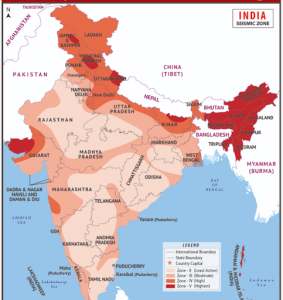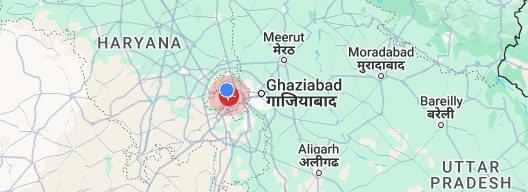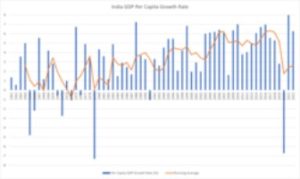On Monday morning, strong tremors shook Delhi-NCR and various parts of northern India, waking residents and causing many to rush outside. The earthquake struck at 5:36 AM IST, with its epicenter located at Dhaula Kuan, according to the National Centre for Seismology (NCS).
Although a 4.0-magnitude earthquake is classified as moderate, its impact its impact felt stronger than usual due to its shallow depth .
Why Delhi is prone to Earthquake?
Delhi is prone to earthquakes due to its location near several active fault lines. The city lies in Seismic Zone IV, which is considered a high-risk zone. Several factors contribute to Delhi’s earthquake vulnerability:
1) Proximity to the Himalayan Region: The tectonic plate boundaries of the Indian Plate and the Eurasian Plate are responsible for the geological activity in the region. The ongoing collision between these plates results in stress accumulation along fault lines, increasing the likelihood of earthquakes.
2) Active Fault Lines: The region around Delhi, particularly in the foothills of the Himalayas, has several active fault lines, such as the Hingakhal and the Yamuna fault lines, which can trigger seismic activity.
3) Urbanization: Rapid urbanization and dense construction in Delhi increase the risk of damage during an earthquake. High-rise buildings and infrastructure may not always be built to withstand significant seismic forces.
4) Soil Composition: The alluvial soil in Delhi amplifies seismic waves, making the region more susceptible to strong ground shaking during an earthquake.
Although earthquakes are not frequent, Delhi’s location and geological conditions make it vulnerable to seismic activity.
What is Seismic Activity?
Seismic activity refers to the frequency, intensity, and distribution of earthquakes in a particular area over a given period of time. It is the measure of the movement or shaking of the Earth’s surface caused by the release of energy from the Earth’s crust due to tectonic processes such as the movement of tectonic plates, volcanic activity, or faulting.
Seismic activity can be assessed by monitoring:
1.Earthquakes: These are the primary events that contribute to seismic activity, ranging from small tremors to large, destructive earthquakes.
2.Aftershocks: These are smaller earthquakes that occur after the main shock, as the Earth’s crust adjusts to the changes caused by the initial earthquake.
3.Tectonic Movements: These include the shifting and collision of tectonic plates, which is the primary cause of seismic events.
In areas with frequent seismic activity, specialized equipment called seismographs is used to detect and measure the magnitude and intensity of the earthquakes, helping scientists understand the patterns of seismic movements and assess risks to infrastructure and communities.
Delhi has experienced several significant earthquakes throughout its history due to its location near active fault lines and tectonic zones. While the city has not experienced frequent major earthquakes, it remains vulnerable due to its seismic zone classification. Here’s an overview of historical earthquake activity in the Delhi region:
1) 1803 Earthquake: One of the earliest recorded significant earthquakes in the Delhi region occurred in 1803. It was a powerful earthquake that caused considerable damage to the city and surrounding areas. Although its exact magnitude is unknown, it was felt strongly in Delhi and neighboring regions.
2) 1903 Earthquake: Another notable earthquake struck the Delhi region in 1903, with tremors felt across the city. This earthquake was recorded at a magnitude of around 6.3. It caused structural damage in some areas, but Delhi remained relatively unaffected in terms of large-scale destruction.
3) Delhi Earthquake of 2011: On March 20, 2011, Delhi experienced an earthquake of magnitude 4.8 on the Richter scale, centered in the nearby region of Haryana. While the tremors were moderate, they were strongly felt in Delhi, with people rushing out of buildings due to fears of aftershocks. There was minor damage, but no major casualties.
4) 2019 Delhi Earthquake: In 2019, Delhi experienced an earthquake of magnitude 3.8, with its epicenter located in the region of Sonipat (in Haryana), around 60 km from Delhi. The tremors were felt in parts of Delhi, though there were no significant reports of damage.
5) Recent Seismic Activity: Delhi is situated in Seismic Zone IV, which is categorized as a high-risk zone. This means the city is at risk of future earthquakes, although the exact frequency of strong quakes is hard to predict. Scientists continue to monitor the region for any unusual seismic activity, as the surrounding areas, such as the Himalayan belt, remain tectonically active.
Due to the proximity of Delhi to active fault lines and seismic zones, experts warn that the region could experience stronger earthquakes in the future, making preparedness crucial for minimizing damage and loss.

While a major earthquake in Delhi is not guaranteed in the near future, the region remains seismically vulnerable due to its location near active fault lines and tectonic activity. Therefore, it is important for the city to be prepared for the possibility of such events, including building structures that are earthquake-resistant, creating awareness, and planning for emergency responses.



